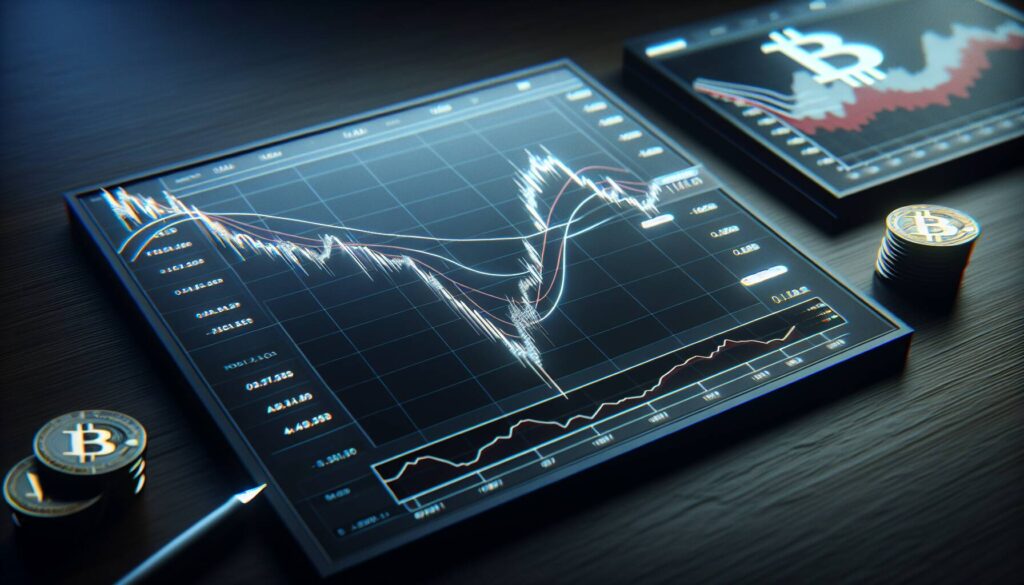In a recent thread on X, Doug Colkitt, Founder of Ambient Finance, provided valuable insights into the concept of auto-deleveraging (ADL) within the cryptocurrency perpetual futures market. This mechanism serves as a crucial safety net for exchanges during times of extreme market stress, particularly when liquidations surpass available buffers and depth. Perpetual futures, often referred to as “perps,” are unique financial instruments that enable traders to speculate on price movements without fixed expiration, thereby mirroring spot prices through funding payments instead of physical delivery.
Colkitt explains that auto-deleveraging acts as the final safeguard in a risk management framework, ensuring the system maintains its integrity. When a trader’s account faces liquidation, standard procedures generally suffice, yet in situations where significant slippage occurs, venues turn to their reserves—insurance funds and programmatic liquidity—to mitigate losses. Interestingly, these buffers can be profitable during market downturns, with Colkitt citing an instance where Hyperliquid’s vault realized a remarkable $40 million amidst a tumultuous session. However, he emphasizes that these vaults aren’t foolproof; they too are governed by risk parameters.
To illustrate the concept of ADL, Colkitt likens it to overbooking on an airline; if volunteers for bumps aren’t available, some passengers must be removed from the flight. In the context of perpetual futures, this means that profitable positions may be partially trimmed to sustain market stability. Exchanges develop algorithms that determine the order of reductions based on unrealized profits, leverage, and position sizes, often prioritizing larger, more speculative accounts for this recalibration.
Although the auto-deleveraging process can frustrate traders, especially those who find their gains cut short at pivotal moments, Colkitt argues that its existence is essential for the health of the market. With no physical assets backing these cash-settled contracts, the perpetual market relies on these systemic measures to balance obligations and avert potential financial chaos. In his view, the visibility of this mechanism and the rules that govern it is paramount for fostering trust and stability in the trading environment.
Ultimately, the auto-deleveraging mechanism is designed to preserve the balance of the perpetual futures market. Clear guidelines and transparent operational frameworks are crucial to ensuring that this backup system is seldom required, functioning rather as a reliable support structure in times of crisis. Colkitt’s commentary sheds light on the often-overlooked complexities of cryptocurrency trading, providing a deeper understanding of the inherent risks and safeguards in this rapidly evolving industry.

Understanding Auto-Deleveraging in Crypto Futures
Key points related to the impacts of auto-deleveraging (ADL) on crypto perpetual futures trading:
- Definition of Auto-Deleveraging: ADL acts as an emergency mechanism that reduces winning positions to maintain market stability in situations of excessive bankrupt liquidations.
- Function of Perpetual Futures: Perpetual futures are contracts that mimic the spot market, settling in cash rather than physical assets.
- Risk Management Process: In the event of bankruptcies, venues utilize buffers like insurance funds and vaults to manage risks before resorting to ADL.
- ADL as a Last Resort: It is triggered when other measures fail to maintain solvency, emphasizing the underlying risks in the crypto market.
- Queue Mechanics: Exchanges prioritize which positions to reduce based on unrealized profit, leverage, and position size, often affecting large, profitable traders first.
- Impact on Traders: ADL can disrupt profitable positions, particularly during market highs, resulting in unexpected losses for traders who are otherwise performing well.
- Transparency and Predictability: Exchanges are encouraged to maintain clear rules and visible queues to manage ADL effectively, with the goal of enhancing trader confidence.
- Existence and Frequency: Although ADL is designed as a safety net that is rarely used, its existence is crucial for maintaining the market structure in high-leverage environments.
- Market Health Implications: ADL reflects the need for balance within trading venues, aiming to prevent cascading failures and maintain the integrity of the perpetual contracts.
Colkitt emphasizes that while ADL provokes frustration among traders, it is essential for the overall stability of the market, ensuring that it continues to function under stress.
Understanding Auto-Deleveraging in Crypto Perpetuals: Competitive Insights
In the rapidly evolving world of cryptocurrency trading, particularly in perpetual futures, the mechanism of auto-deleveraging (ADL) has become a pivotal aspect of risk management. Compared to other trading environments, ADL offers a structured approach to maintaining market stability during tumultuous times. However, it comes with its unique set of competitive advantages and disadvantages.
Advantages: One of the primary benefits of ADL is its role as a safety net during extreme market conditions. When liquidations threaten to overwhelm a platform, ADL ensures that the exchange can stabilize its operations by selectively trimming profits from winning trades, thereby preventing a broader systemic failure. This proactive measure can mitigate panic and maintain liquidity, appealing to traders who prefer platforms with robust risk management features. Additionally, venues leveraging effective liquidity buffers, like Hyperliquid’s impressive vault, can seize buying opportunities amidst market chaos, often securing significant profits.
Disadvantages: On the flip side, the implementation of ADL can frustrate traders who may find their winning positions curtailed unexpectedly. This may alienate high-stakes players who rely on leveraging their trades for maximum profit, placing them at risk of losing out when their positions are trimmed during peak performance. The mechanics of the ADL process—prioritizing large, profitable accounts—can also breed resentment, as it seems to penalize those who have successfully navigated the market.
This mechanism primarily benefits exchanges aiming to offer high-leverage opportunities without exposing themselves to catastrophic losses. However, it poses potential issues for individual traders, particularly those who engage in strategic trading to capitalize on volatile movements. Such traders must navigate the inherent risks of being “bumped” during critical moments, which could erode trust in exchanges that implement ADL. Moreover, those relying on conventional investment strategies may find themselves increasingly outmatched in environments dominated by large-scale, high-leverage players.
In summary, while auto-deleveraging serves as a critical component of risk management in the perpetual futures market, it simultaneously introduces challenges for both exchanges and traders. Understanding this balance is crucial for anyone looking to engage with or invest in this dynamic and often unpredictable space.

















